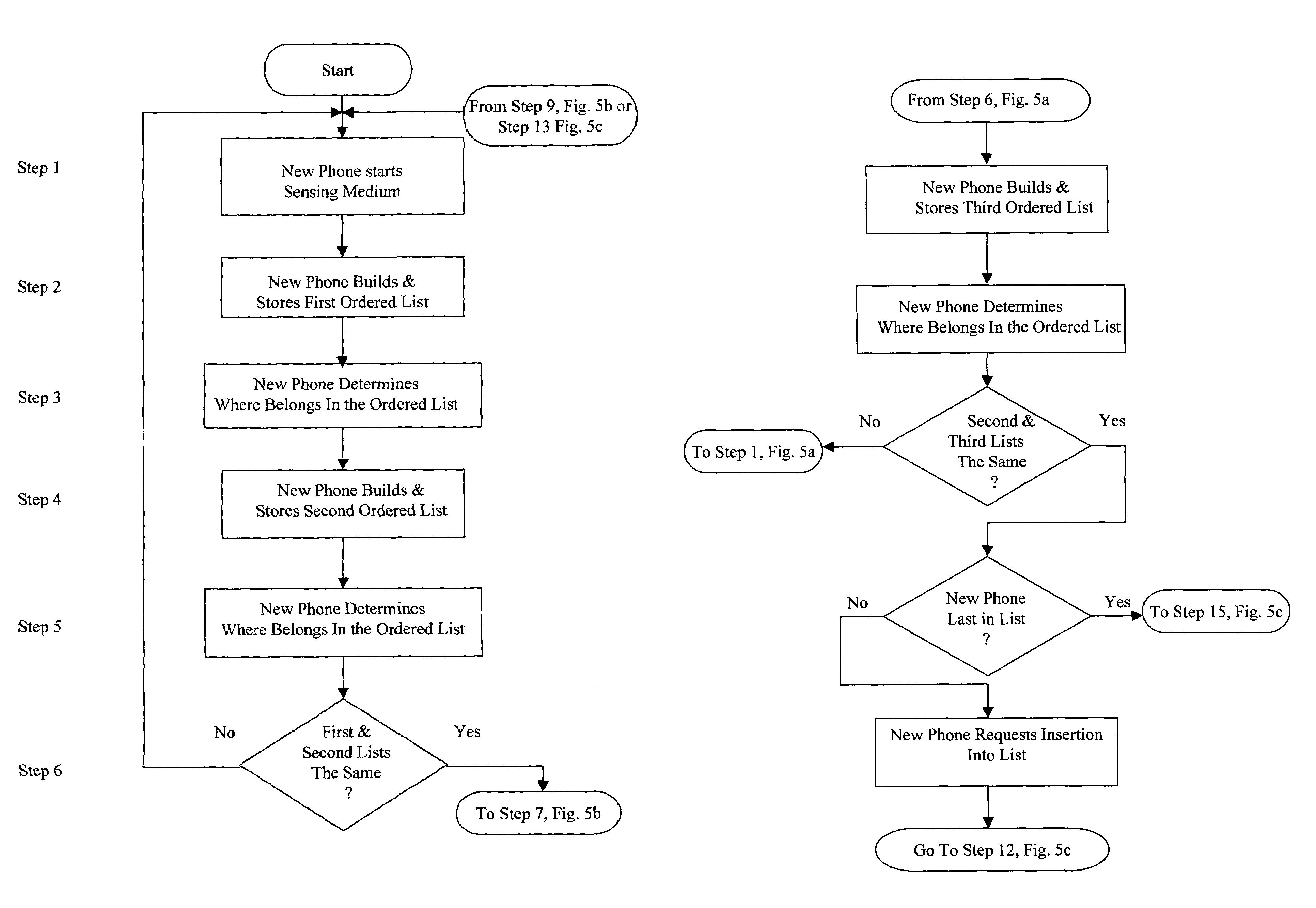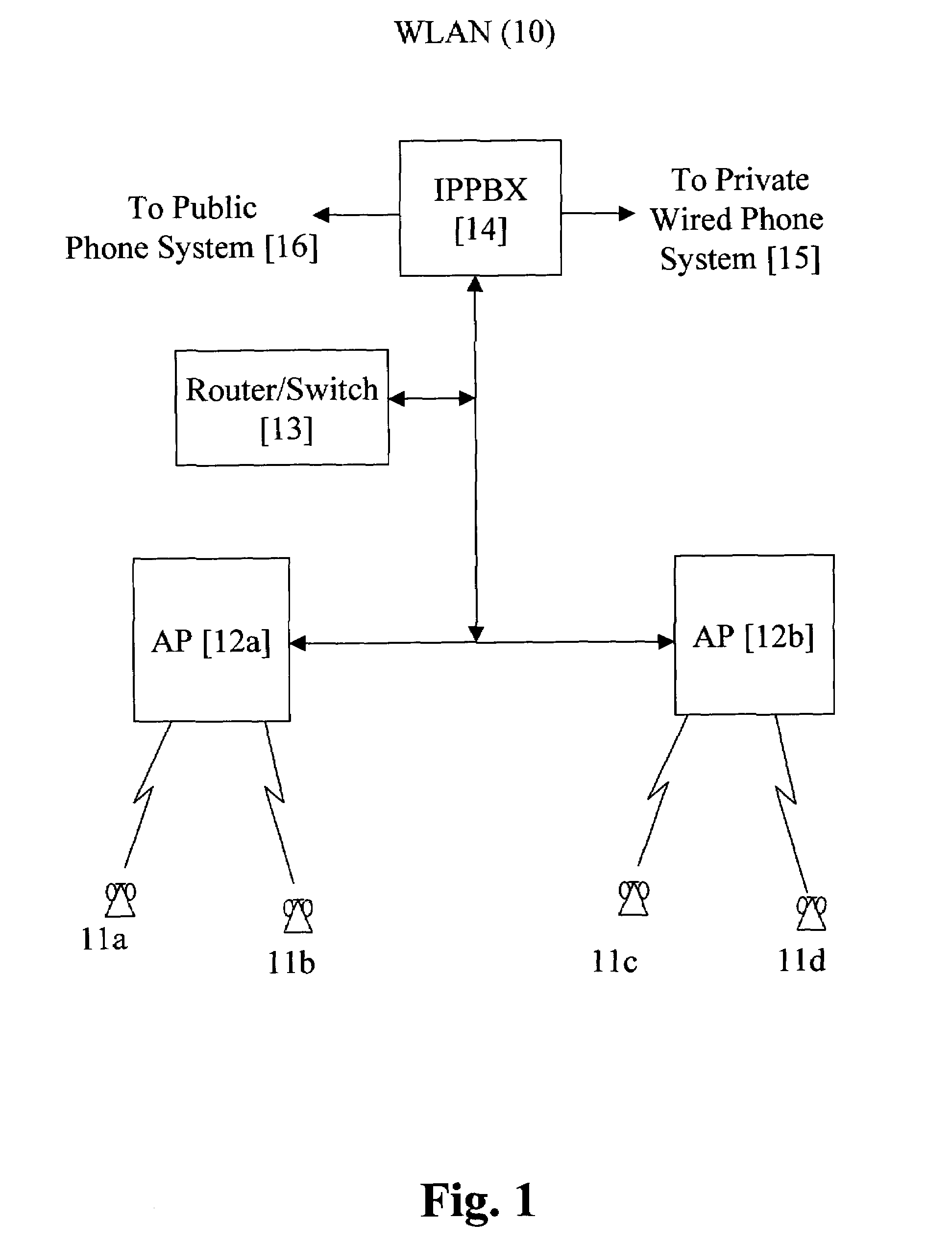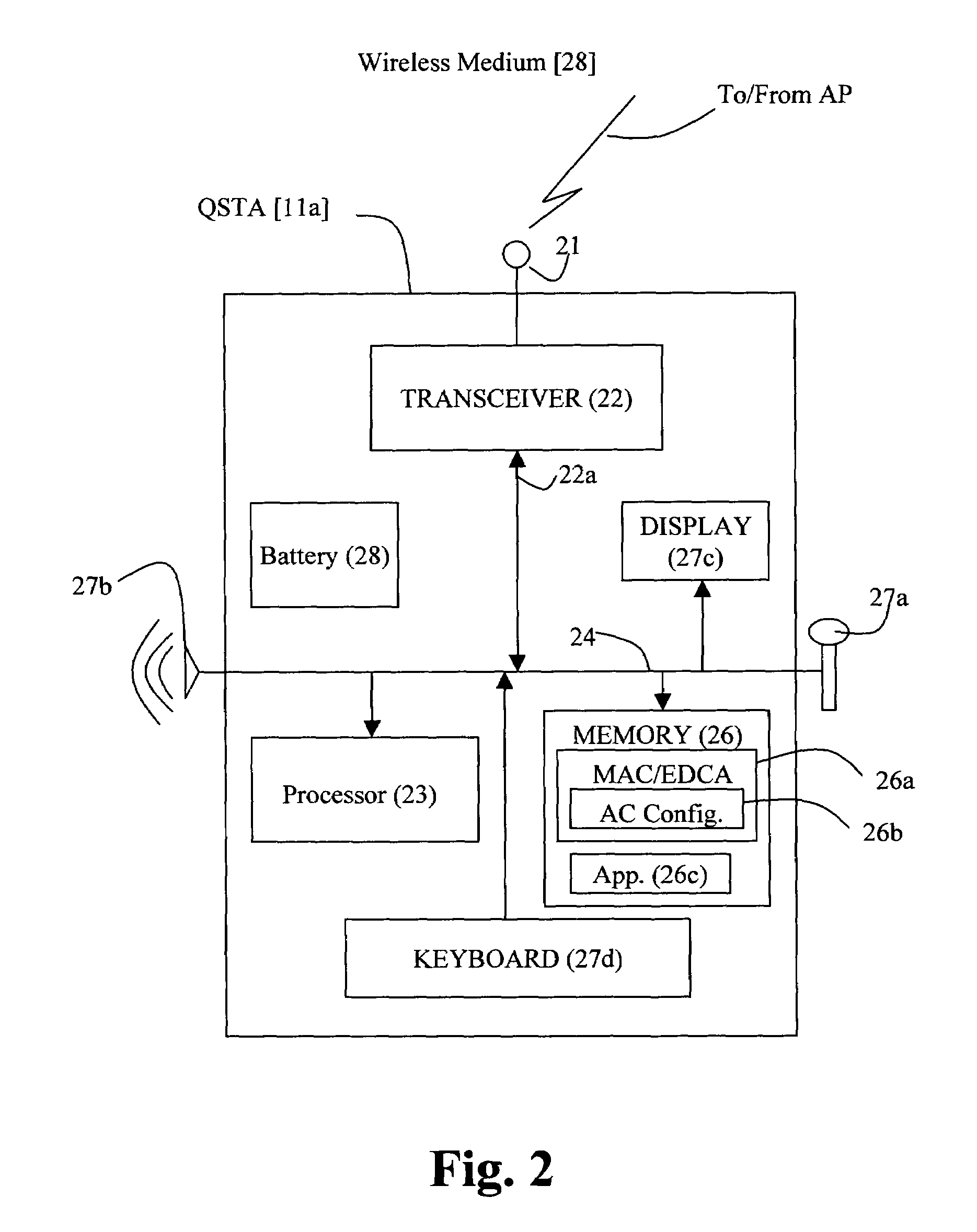Method for actively synchronizing U-APSD service periods
a technology of active synchronization and service periods, applied in the field of wireless communications, can solve the problems of not addressing quality of service issues, reducing the service period, so as to reduce the inter-service period time
- Summary
- Abstract
- Description
- Claims
- Application Information
AI Technical Summary
Benefits of technology
Problems solved by technology
Method used
Image
Examples
Embodiment Construction
[0016]In order to implement the method and apparatus of our invention, it is necessary to possess a working knowledge of ANSI / IEEE Std 802.11, 1999 Edition (802.11) and IEEE P802.11e / D13.0, January 2005 (802.11e) edition, both of which are hereby incorporated into this application in their entirety,
[0017]Referring to FIG. 1, QoS capable mobile phones (QSTA) 11a and 11b are associated with QoS capable access point (QAP) 12a and QoS capable mobile phones (QSTA) 11c and 11d are associated with QoS capable access point (QAP) 12b in the wireless LAN (WLAN) 10. The QSTA's and the QAP can be configured to operate in the unscheduled, automatic, power-save, delivery mode or U-APSD mode. A QSTA configured to operate in the U-APSD mode and a QAP configured to operate in the U-APSD mode communicate with each other using the communications protocol and frame formats specified by at least the combination of the 802.11 and 802.11e standards. The process whereby a QSTA associates with a QAP will be...
PUM
 Login to View More
Login to View More Abstract
Description
Claims
Application Information
 Login to View More
Login to View More - R&D
- Intellectual Property
- Life Sciences
- Materials
- Tech Scout
- Unparalleled Data Quality
- Higher Quality Content
- 60% Fewer Hallucinations
Browse by: Latest US Patents, China's latest patents, Technical Efficacy Thesaurus, Application Domain, Technology Topic, Popular Technical Reports.
© 2025 PatSnap. All rights reserved.Legal|Privacy policy|Modern Slavery Act Transparency Statement|Sitemap|About US| Contact US: help@patsnap.com



